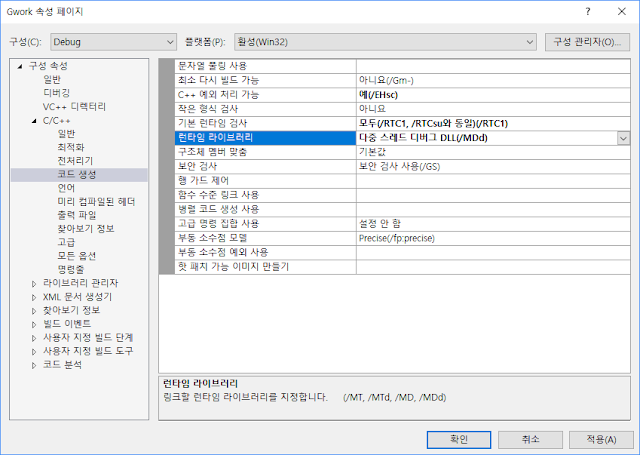C# C++의 Template과 같은 Generic으로 Custom Generic Class 만들어보기
C++의 템플릿을 C#에서는 제네릭이라고 하네요. 기본적으로 System.Collections.Generic에 있는 Dictionary<,> 등은 자주 사용했는데 커스텀 된 제네릭은 만들어보지 않아서 이번에 유니티3D에서 게임 데이터 시리얼자이즈/디시리얼라이즈 객체 만들면서 필요하게 되서 C#의 커스텀 제네릭 간단한 사용법을 정리해봅니다. 초간단한 내용이므로 C#을 잘 하시는분은 패스하셔도 됩니다.
먼저 간단하게 C++ 템플릿과 C# 제너릭의 차이점을 정리해보면 C# 제네릭이 C++의 템플릿처럼 복잡하지 않고 간편하게 다룰 수 있다가 되겠습니다. C++ 템플릿에서는 지원하는 특징들이 C# 제네릭에서는 사용할 수 없게 제한이 되어있기 때문에 더욱 간편한 듯하네요. 자세한 차이점은 MSDN 링크를 확인하세요.
C++에서는
template<class T>
class MyTemplate
{
...
};
이렇게 했다면, C#은 간단해졌네요. template구문이 필요없네요.
class MyTemplate<T>
{
...
};
이렇게 간단하게 끝내면 섭하죠? 아래는 역시나 MSDN의 제네릭 소개 부분의 코드를 긁어와 봤습니다. 보통은 아래처럼 안하고 이미 .NET Framework에 있는 LIst<T>를 사용하겠지만 예제니까요.
아래는 위에서 만든 GenericList<T>를 사용하는 main부분입니다. int로 넘겨줬지만 string나 사용자 정의 객체를 사용해도 무방하겠죠.
간단하게 정리해봤습니다. 위에 MSDN 링크에는 이외에도 많은 내용들이 있네요. 역시 공부할게 많아요~
먼저 간단하게 C++ 템플릿과 C# 제너릭의 차이점을 정리해보면 C# 제네릭이 C++의 템플릿처럼 복잡하지 않고 간편하게 다룰 수 있다가 되겠습니다. C++ 템플릿에서는 지원하는 특징들이 C# 제네릭에서는 사용할 수 없게 제한이 되어있기 때문에 더욱 간편한 듯하네요. 자세한 차이점은 MSDN 링크를 확인하세요.
C++에서는
template<class T>
class MyTemplate
{
...
};
이렇게 했다면, C#은 간단해졌네요. template구문이 필요없네요.
class MyTemplate<T>
{
...
};
이렇게 간단하게 끝내면 섭하죠? 아래는 역시나 MSDN의 제네릭 소개 부분의 코드를 긁어와 봤습니다. 보통은 아래처럼 안하고 이미 .NET Framework에 있는 LIst<T>를 사용하겠지만 예제니까요.
// type parameter T in angle brackets public class GenericList<T> { // The nested class is also generic on T. private class Node { // T used in non-generic constructor. public Node(T t) { next = null; data = t; } private Node next; public Node Next { get { return next; } set { next = value; } } // T as private member data type. private T data; // T as return type of property. public T Data { get { return data; } set { data = value; } } } private Node head; // constructor public GenericList() { head = null; } // T as method parameter type: public void AddHead(T t) { Node n = new Node(t); n.Next = head; head = n; } public IEnumerator<T> GetEnumerator() { Node current = head; while (current != null) { yield return current.Data; current = current.Next; } } }
아래는 위에서 만든 GenericList<T>를 사용하는 main부분입니다. int로 넘겨줬지만 string나 사용자 정의 객체를 사용해도 무방하겠죠.
class TestGenericList { static void Main() { // int is the type argument GenericList<int> list = new GenericList<int>(); for (int x = 0; x < 10; x++) { list.AddHead(x); } foreach (int i in list) { System.Console.Write(i + " "); } System.Console.WriteLine("\nDone"); } }
간단하게 정리해봤습니다. 위에 MSDN 링크에는 이외에도 많은 내용들이 있네요. 역시 공부할게 많아요~



댓글
댓글 쓰기